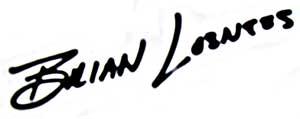
Fueling the pump controversy
Many times, a bad thing can bring about positive result. Hopefully this is what will happen after the events of the recent March Meet and controversy over the fuel pumps deemed illegal by the NHRA.
There is still a great deal of debate over what actually transpired, how it was handled by all parties involved and, more importantly, how it can be prevented from happening again.
At the Heritage Series event at Firebird Raceway, there was talk among the competitors about what had happened. On Friday afternoon of the Ignitor, since the event was rained out many of the nitro contingent congregated inside John Hale’s big black hauler (not only because it was out of the wind and rain, but because Hale was putting on a huge barbeque feed; good food can lead to good conversation).
As Hale was holding court, the talk turned to fuel pumps and there were many thoughts about how things at Bakersfield were handled. Hale’s contention was that there should be a check of fuel pumps prior to the event and then again at the conclusion, thus fans and racers could know when they leave the track who the winner truly was.
There were those who agreed with what Hale had to say, and many were adamant that something had to be done about how pumps needed to be tested, that there should be transparency with regard to the testing process. While all this was taking place, an NHRA tech official was sitting in the back of the hauler, not saying much but taking a great number of notes, eating barbeque, and occasionally nodding his head.
On Saturday morning, I spoke with NHRA’s Division 7 director Mike Rice. Rice, who has been with the NHRA for many years, started as a tech official, eventually took the position of Div 6 starter and Div 7 director, and is now the head of the NHRA Rules Committee.
Rice stated that, in regards to the Bakersfield situation, Ken Crawford’s test is the benchmark, and that this was a cut and dried fact, the numbers decided by the committee (20 gallons per minute for Top Fuel and 21 for Funny Car) was a hard and fast rule, and that allowing any variance would just create havoc. He also said that it is up to the pump manufacturers to build pumps that fall within the limits set by the sanctioning body.
When the procedure for checking pumps (for shaft and gear size) during prerace was brought up, Mr. Rice did not seem opposed to it. However, he stated that it would take a bit more time to tech the car and that the procedure would have to be a bulletproof to insure that no one could circumvent the system, for example, getting tested and then changing pumps prior to the final round. That is why Rice is of the opinion that it is better to randomly pull pumps and send them to be flowed, along with checking gear and shaft sizes at the conclusion of the event.
However, at the larger events it becomes a question of manpower. There is just one tech official to work these events and when there are both Top Fuel and funny cars, getting the cars all teched can be an issue. According to Rice, NHRA never envisioned that nostalgia racing would grow to the size it has, and bringing in additional personnel for tech inspections, including checking pumps pre-race, would be an issue due to budgetary considerations.
When asked who would allocate funding to cover this and who oversaw the Heritage Series, Rice was cautious, saying that there really isn’t an assigned figurehead. However by default the staff would go to Steve Gibbs for guidance. NHRA Field Marketing Director Eric Lotz is taking some responsibilities, as well as Rice himself. Rice also said that, “We want to keep this program as affordable for the track as possible, so everything has to be looked at.”
 It seems change could happen, but someone would have to act first.
It seems change could happen, but someone would have to act first.
Most racers are business people, and most businesses are based on sales. Successful sales people do one fundamental thing: they ask for the sale. Get the hint?![]()


